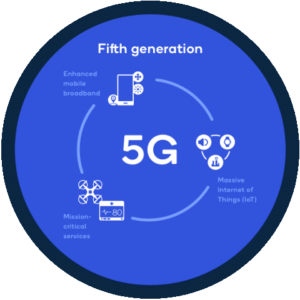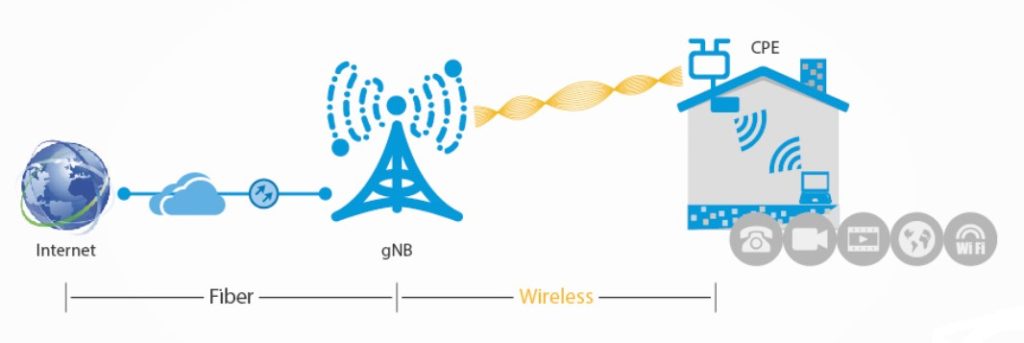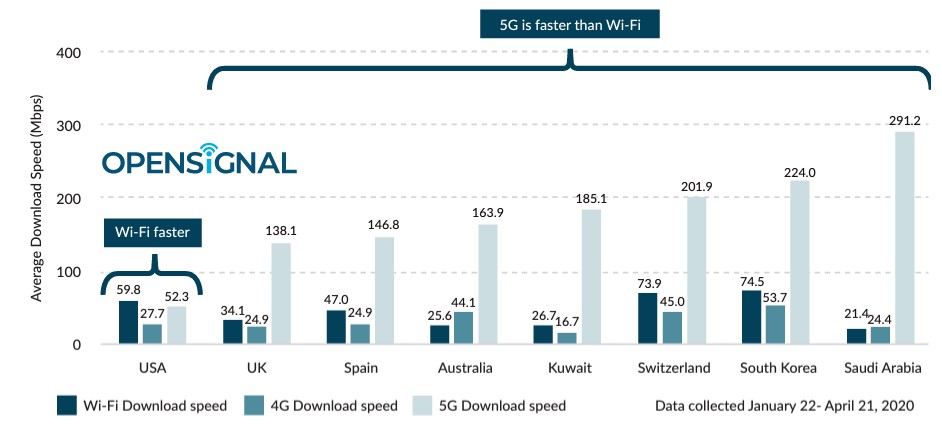Introduction
5G is the most significant and pivotal of this decade. It can deliver high capacity and greater connectivity that will support new services and add new capabilities. 5G will impact every aspect of our lives, like connectivity, knowledge sharing, safety, and entertainment.
5G enables many use cases like autonomous cars, smart cities, augmented reality, new methods of social interaction, in the field of medicine, and enhanced fixed wireless connectivity.

5G supports different use cases
5G enables mobile services to be provided with high speed, reliability, and low latency performance. This opens a whole range of new use cases and revenue opportunities for mobile service providers and enterprises. The 10 times increase in download speeds provided by 5G makes Fixed Wireless Access (FWA) a compelling alternative for access connectivity.
The ease of installation and setup of 5G FWA, as well as its applicability in a range of use cases, means that 5G FWA could become the preferred access connectivity choice.
What is Fixed Wireless Access (FWA)
Fixed Wireless Access (FWA) is a way to provide wireless internet access to homes or businesses without laying fiber and cables to provide last-mile connectivity. FWA enables network operators to provide ultra-high-speed broadband to sub-urban and rural areas where the cost of laying fiber or maintaining fiber lines is prohibitively expensive.

FWA can be implemented by the cellular technologies LTE or 5G.
Why FWA is important?
The last mile access is a complicated process that involves a long period of engineering practice, difficult secondary construction, and high maintenance costs as well as high complaints caused by the destruction of property and decoration. All these results in a deployment problem in the last mile.
However, FWA using EM (electromagnetic) waves instead of cables as the medium for signal transmission avoids the problems of traditional deployment including digging trenches and cabling. The traditional wired access solution provides one-dimensional coverage, that is, signal transmission is provided where there are cables.
FWA offers two-dimensional coverage, that is, when a site is established, users in the site-centered coverage area can enjoy high-speed access service. 5G-based FWA can even provide three-dimensional coverage, that is, users in the high-rise buildings covered by the site can enjoy high-speed data access service.
5G Fixed Wireless Access (FWA)
The introduction of 5G is now changing the perception of FWA as it addresses the shortcomings of earlier generations. 5G offers 10 times the bandwidth with 10 times lower latency across a broad range of radio frequencies.
5G FWA is ideal for providing access connectivity in areas where fiber or cable deployment cannot be justified, such as rural connectivity and for temporary sites. However, with 5G FWA speeds, reliable and low latency performance, 5G FWA is also a compelling wireline alternative for urban connectivity in both homes and enterprises, smart factories, private campuses, and entertainment venues. It not only provides connectivity but also opens the door to new types of services supporting private networks and targeted marketing.
The 5G FWA Opportunity
Today, broadband access is dominated by wired technologies like xDSL and cable. It is hard to predict alternative technologies usurping this dominance. However, just like mobile phones, the importance of wireless broadband connectivity cannot be denied.
There are advantages in providing immediate connectivity without the need for costly digging to lay copper cables or fiber such as that required for the wireline technologies. The concept of wireless broadband connectivity is as old as mobile itself and yet has struggled to find the same appeal as mobile phones. However, with the introduction of 5G, this is all set to change.
The higher throughput and lower latency than 5G provides will finally establish wireless broadband connectivity as the dominant paradigm for years to come. Fixed Wireless Access (FWA), in particular, can be expected to become the preferred form of broadband connectivity for homes and businesses. We can discover that by comparison of WiFi and Mobile Performance in Leading 5G Countries, source: Open Signal

5G FWA is a Fiber-Like Experience
The reason why 5G FWA can address the growing needs for broadband data access is mainly due to the improvements and breakthroughs that have been made on key 5G technologies including new radio (NR) interface, massive MIMO, as well as network slicing, and QoS guarantee. 5G FWA provides users with a fiber-like experience.
- 5G New Radio Interface
The overall design of the 5G NR protocol layer is based on LTE and has been enhanced and optimized. At the physical layer, NR reduces air interface overhead by optimizing the reference signal design and enables flexible bandwidth configuration by using more flexible waveform and frame structure. The new channel coding and modulation scheme allow the 5G physical layer to have more flexibility and better performance for adapting to different application scenarios. - Massive MIMO
There will be a significant increase in the number of 5G base station antennas and ports, which will enable a large-scale antenna array with hundreds of antennas and dozens of antenna ports. Depending on the accurate and mature channel estimation algorithm and multi-user MIMO (MU-MIMO) scheduling mechanism, Massive MIMO supports spatial multiplexing transmission of multiple users, which leads to a several-fold increase in 5G spectrum efficiency and is beneficial to enhance user experience in user-intensive high-capacity scenarios. - Network Slicing and QoS Guarantee
Network slicing is an important enabling technology for 5G networks. Provided that key indicators such as spectral efficiency, system capacity, and network quality are not affected, wireless network slicing places emphasis on the utilization efficiency of air interface time-frequency resources and uses a combination of flexible frame structure and QoS differentiation to achieve intelligent scheduling of radio resources. Moreover, differentiated network slicing comes true through flexible re-configuration of radio network parameters.
FWA Use Cases
Growing demand for high-speed low-cost internet to residential consumers has paved the way to developing FWA technologies over 5G NR. Broadband services can be delivered to a household using an indoor or outdoor subscriber unit and running new 5G NR technology to connect that subscriber unit to the wireless network.
The coverage is extended inside a consumer’s home using additional devices with the home. The Residential use case can be broadly classified into two areas: Suburban/Urban and Rural.
Also, 5G FWA opens a range of new opportunities in addressing enterprise use cases that were previously unviable. Entertainment venues often face the challenge that while events are underway, there is a massive need for high-capacity connectivity. However, when the event is over, that demand falls to almost zero. This leads to the dilemma of investing in a permanent solution with the capacity to meet peak demands or finding a temporary solution that can increase capacity when required.

Conclusion
5G FWA provides mobile operators with the opportunities to expand into the home and enterprise broadband market without the need to build a fixed-line network. Introducing hybrid service products into the home and enterprise market in the form of FWA bundled eMBB services, and binding home broadband to voice and video services are the most effective solution to attract users and increase the monthly average revenue per user (ARPU). In this way, users can cut costs, and operators can enhance user stickiness, increase network revenue and gain more market share.
- ZTE, 5G FWA: Solution to Last Mile Deployment.
- 5G Americas, FWA with 5G Network
- Mobile World Live, Seize the 5G FWA Opportunity
- Ericsson, Fixed wireless access outlook












